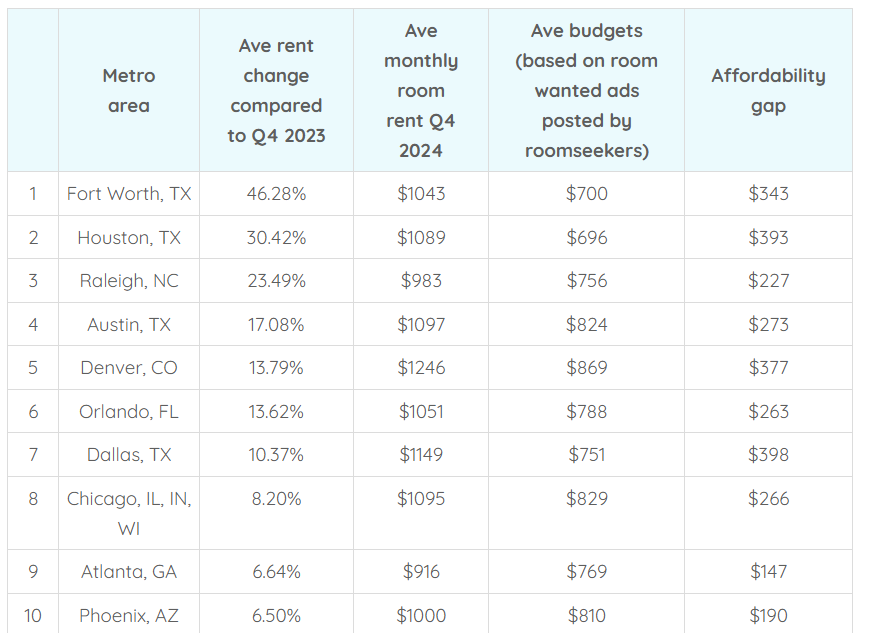Texas metro areas have seen some of the highest annual room rent increases in Q4 year over year, from Fort Worth (+46%) and Houston (+30%) to Austin (+17%). This according to the latest quarterly rental data from SpareRoom.
Renters in the Fort Worth are now paying, on average, $1,043 per month, a 46% increase from Q3 2023 to Q4 2024—but the average renter only has $700 budgeted for rent per month. And woe be if you live in Dallas or Houston, where average room rents are almost $400 higher than renters’ budgets.
Worse, budgets were outstripped by Q4 average rents in every metro area in SpareRoom’s index, revealing a huge affordability crisis. Houston’s rent increase of 30% means that renters there have to find an additional $393 a month.
Rent costs in Atlanta, Orlando, Dallas, and Houston all peaked in Q4 2024, beating all previous records. New York, Seattle, and Boston were the only metros in the index where rents decreased.
The table below shows average rents and rent increases for the 21 most popular metro areas on SpareRoom, alongside roommates’ average budgets for each area. Bolded metro areas have seen rents peak in Q4 2024:

“Renting has many benefits over home ownership, including flexibility and the ability to relocate quickly for career opportunities,” said Matt Hutchinson, SpareRoom Communications Director. “But when budgets fall short of average rents, in some cases by hundreds of dollars per month, those benefits vanish and renters can end up trapped. In a recent SpareRoom survey, one third of US renters said they’d turned down a job offer to avoid having to move. And there are hidden consequences when people stay put. Not just the long-term impact on renters’ finances and mental health, but the knock-on effects for the economy too. Any strategy for growth that relies on jobs means having a fluid and flexible workforce, which just doesn’t exist when rents spiral out of reach of the average renter.”
Click here for more on Spareroom’s analysis of the nation’s rental market.







